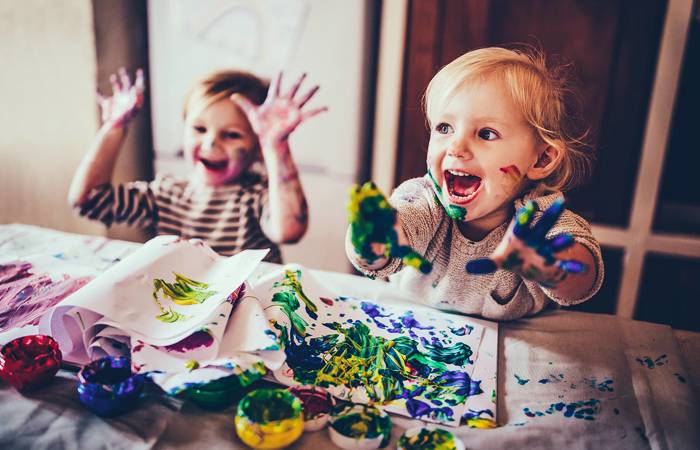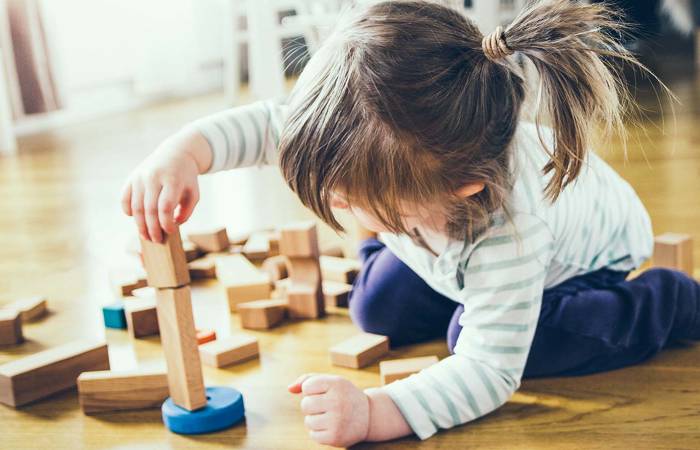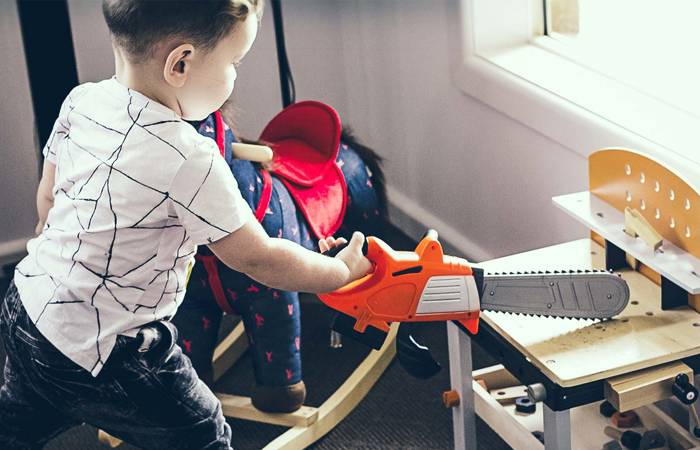Like what you see?
Sign up to receive more free parenting advice.
Thank you for subscribing to our newsletter!
Early Learning

Credit: iStock.com/NikolaStojadinovic
Maggie Dent is one of Australia’s most popular parenting authors and educators. In this article she looks at why imagination matters not just in childhood, but in our adult lives.
Children’s imaginations, especially before a child is seven, are incredibly important even though they can be difficult for grown-ups to understand at times.
Young children are meant to live in the world of childhood and the imagination can nurture, protect and insulate them from many of the harsh realities of the modern adult world that surrounds them. Not only does it have a protective role, it can also feed their growing spirits and enable the growth of their emotional and social competencies, which will help them in adolescence and adulthood.
Sadly, imagination and the unhurried, holistic growth of healthy, happy, resilient children have suffered greatly in the last couple of generations.
Modernism, with the rise of a popular culture that honours ‘fast and quick’ living, the ‘must-have’ consumerist mentality, the arrival of the digital world, and family and community disintegration have all taken their toll on children.
I firmly believe that a rich, imaginative childhood is essential for the evolving brain. It helps to create the neuronal templates that ensure emotional stability, social awareness and the spiritual strength to cope with life in this chaotic, constantly changing world.
Put simply, the imagination helps children explore and interpret life experiences as they strive for a sense of meaning. This search for meaning is not a logical process for children.
Let’s pretend…
A little girl lines up her dolls and teddy bears. She then assumes the voice of an adult and proceeds to teach her ‘students’ about the importance of being tidy.
Watching carefully, we could notice that she is modelling a significant adult in her life. She copies the voice, body language, words and intonations that she experiences so strongly in her life. And she copies so well! Sometimes she uses a growly voice to scold an inattentive doll: “Are you listening to me?” She may then immediately become tender and console the wounded doll, reassuring it with kind words and a hug.
I have noticed this pattern of events many times. Interestingly, it is the child who makes up the part about consoling, probably in response to what they wish had happened to them when they were scolded.
In this pretend play they are able to explore their emotional worlds and attempt to make sense of how adults behave and how their world could be improved.
‘Let’s pretend’ - these words can be heard often with children in our homes, early learning centres, communities and our schools. I was fascinated during the pandemic to hear my granddaughter – when we were playing ‘doctors’ together – check that I didn’t have COVID symptoms before I had my appointment with her!
Pretend play or dramatic play, known technically as socio-dramatic play, is one of the best ways to consolidate oral language.
Research indicates that children who engage in pretend play tend to use higher forms of language than they would use in normal situations, often because they are pretending to be adults.
Children weave into their imaginary world aspects of the real world in order to make sense of it.Maggie Dent, one of Australia’s most popular parenting authors and educators
I still have vivid memories of playing shops with my sister in our backyard with a pretend cash register. Nowadays our children will use an imaginary scanner and ask for your card to go beep. This shows how they adapt their imaginary world to the world they are in.
Using imagination to shift emotions
It is important to remember that before the age of four, children’s real-world and imaginary world both appear real to them. This is why often when working in therapy with children, imagination can be a powerful facilitator for change.
I frequently used creative visualisation when I was working with children and this is something parents can easily do at home.
One audio track I created was called Calming the Angry Ant, in which I get children to pretend they are an angry ant that can breathe out lots of red from inside their body. They then choose to be a calm animal and breath in sky colour blue.
Once they’ve imagined this, children start doing it again when they feel angry or upset – and they believe they can get rid of their anger with this breathing technique. There are many wonderful mindfulness strategies that use the same principle to create positive change.
Imaginary friends
Children’s imaginations can create new ways of seeing the world and of coping with things that challenge them. Indeed, Marjorie Taylor in her book Imaginary Companions and the Children Who Create Them explained that people who had imaginary friends when they were young children appeared to be more mentally and emotionally stable as adults.
Rather than store, suppress or distort their experiences, they explored them with their imaginary friends. This allowed the child to diffuse any unexpressed emotion and to find a sense of meaning out of their experiences. How fascinating that?
From the age of two we use our imagination to process life experiences, achieve mastery of our emotions, enrich our social understandings, develop communication skills and create wonderful possibilities for our future lives.
Even though young children’s imaginations are more fertile than those of adults, teenagers and adults can still use the imagination for support. It can support our emotional and mental wellbeing right through life.
Do you remember a special spot you had as a child where your imagination was free to play and you were uninterrupted? It is really common when working with adults to discover they had a place of great comfort in their childhood; they retreated there, away from the world, to play, be, and to gather strength. These places often were where a child could discover the wonder of a natural transcendent state of deep oneness – where time ceases to exist, and where all possibilities are possible.
One of my concerns with young children being given digital play opportunities too soon and too often, is that it can displace pretend play. This form of play can seem like not much is happening at all however, it is almost the opposite.
Imagination’s impact on our adult lives
Dr Margot Sunderland, in her book The Science of Parenting, explores the notion that babies, toddlers and little ones are wired to play and be curious. They have a ‘seeking mechanism’ in their developing brains that need to play in as many different ways as possible.
The imagination uses this wonderful ‘seeking mechanism’ to explore new and wonderful possibilities. Often having too many toys, or toys that only work one way rather than allowing a child autonomy and freedom, can stifle not only their imagination but their ‘seeking mechanism’ to be curious and creative in their thinking.
In the days when I worked as a counsellor, pretend play was how young children were able to express what was troubling them in their view of the world.
One very sad four-year-old girl I worked with created a dark picture when I asked her to draw how she was feeling. To explore her sadness, I gave her a princess wand and asked her to make a wish with the wand, so that she could be happier. She paused for a moment and then waved the wand and said, “Abracadabra. I just wish my daddy would play with me sometimes”. She was feeling a profound disconnection from her daddy and once the family had this information, they were able to address it.
Creativity and problem-solving are a much-needed and necessary part of childhood, and imaginary or pretend play are incredibly important to enable and nurture the development of these abilities.
An underdeveloped imagination can suppress the ability for us as adults to imagine a better way of being. I have worked with many adults following a life crisis, who simply could not imagine a way out of the dark place they found themselves. I’ve also met people who have imagined a better future for themselves despite experiencing significant challenge trauma.
The imagination in childhood is not only important to children, it can shape us into being more optimistic, resilient grown-ups as well.








